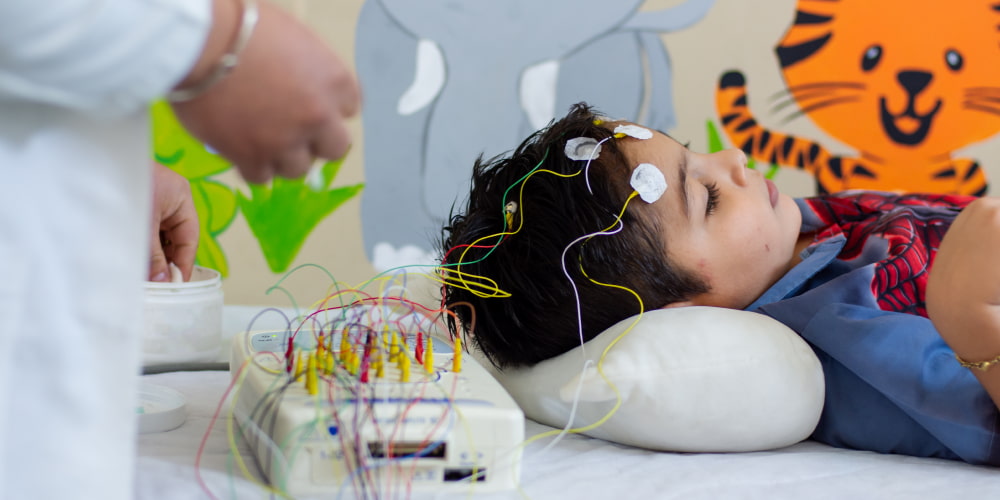Social communication plays a vital role in emotional well-being and maintaining cognitive function. Often, there are certain problems that interfere with good communication and positive social interactions. ASD is an autism spectrum disorder that affects communication directly. The autism spectrum affects human development and brain functioning. There are neurological differences at different ages of people with autism.
Neuroscience plays an essential role in researching this issue. It provides insight into the differences in the human body and its neuronal plasticity. Thanks to neuroscience, it becomes possible to understand how brain structure affects behavior and development. People with ASD often experience heightened sensitivity to light and sounds. Sensory sensitivity can increase and can interfere with daily activities. Professional medical evaluation and appropriate treatment are essential. The connection between brain function and autism traits is key. Understanding this connection will help improve the quality of life for people with autism.
The Role of Neurodevelopment in Autism Spectrum Disorders
Autism research is a critical issue today. Autism spectrum disorder (ASD) is a neurodevelopmental condition that occurs as a result of atypical brain development. ASD typically manifests in early childhood and is a lifelong condition. This disorder is influenced by various genetic and environmental factors. They usually differ in their neural connectivity and brain functions.
- Neurodevelopment has its differences across the autism spectrum. There have been many studies claiming that people with autism experience early brain growth. This is usually associated with social cognition of the entire environment. Atypical development affects the way people perceive and react to the world around them.
- Very often, genetic mutations play a role in autism spectrum disorders. Genetic studies have demonstrated associations with brain plasticity. Genes are also related to the transmission of neural signals and have an impact on new connections. Brain structure is slightly altered and affects daily functioning. Environmental factors can contribute to changes in neurodevelopment. These factors usually include constant stress, depression, or exposure to various toxins.
- Neurological differences are involved in human sensory processing. They show and influence how people with autism process this information. Typically, people with autism may experience hypersensitivity to various stimuli. Among the stimuli are sounds, light, and touch, which are perceived in completely different ways. Equally important is the impact of the disease on social communication and behavior.
Sensory Processing Differences in Autism
LoneStarNeurology provides highly qualified care for people with neurodegenerative diseases. One disease that affects the quality of life is autism. People with this disorder can seek help and receive counseling and treatment to improve their lives. The autism spectrum often affects differences in sensory processing. A person may experience hypersensitivity or hyposensitivity to various stimuli. These sensitivities can significantly impact quality of life. These challenges can impact daily activities and social interactions. Key neurological differences in processing include:
- The thalamus. The thalamus is the brain structure for filtering and processing incoming stimuli. A person with autism may feel differently and have difficulty processing sensory information. They have difficulty regulating sensory processing and prioritizing.
- The amygdala. The amygdala plays an essential role in emotional reactions. Often, sensory stimuli cause negativity and interfere with quality of life. Excessive activation of the body can contribute to anxiety. People with autism experience distress in an over or under-lit place.
- The somatosensory cortex of the brain. Responsible for processing touch and awareness of the body itself. Differences in this area may indicate a high sensitivity to specific structures. Individuals with autism may process pain sensations differently and changes in temperature.
Autism has a significant impact on everyday life and especially on social communication. A person with autism is hypersensitive to sounds, light, and noise. Background noise can cause problems with learning or concentration. It distracts attention and makes it difficult to concentrate on certain things. Individuals may experience balance difficulties and movement due to differences in the vestibular process. Sensory overload can lead to shutdown or withdrawal.
Social Communication Challenges in Autism Spectrum Disorders
People with autism spectrum disorder experience social difficulties. They may have trouble engaging in conversations and have neurological differences. Sensory sensitivity exacerbates social communication difficulties. A noisy environment or lighting can cause discomfort and anxiety to a person. Research shows that problems with social communication in people on the autism spectrum are related to differences. These differences exist in several key areas of the brain:
- The prefrontal cortex is responsible for executive functions such as decision-making. It is often responsible for attention, but there are some differences in people with autism. The activity of the prefrontal cortex is reduced, which leads to difficulties in social responses.
- The amygdala processes the emotional spectrum and recognizes facial expressions. In the autism spectrum, it leads to difficulties with the expression of emotions and their perception.
- Autism research has shown that the spindle-shaped gyrus helps to recognize faces. However, people on the autism spectrum have reduced activity in this gyrus. They often cannot identify emotions and may experience difficulty processing emotional information.
Research has revealed important insights into the differences in social communication in autism. They differ significantly from the behavior of other people. People with autism have difficulty understanding non-verbal cues. It is difficult for them to show facial expressions and gestures and adjust their tone of voice. They do not perceive jokes, sarcasm, and hidden meanings. They often struggle to interpret this type of communication. Social communication causes some discomfort when speaking or listening. People with autism do not perceive eye contact and find it distracting. They also find it very difficult to express emotions and show their emotional state.
Brain Structure and Its Impact on Autism
The autism spectrum is characterized by differences in the social environment. The brain structure has a strong influence on autism and its impact on a person’s life. Research shows that differences are associated with specific brain regions and play a significant role. Understanding these neurological differences is essential for the treatment or therapy of people with the disease. Here are the key brain regions that are associated with the disease:
- The amygdala. The amygdala is responsible for processing emotion and social interaction. Amygdala enlargement may be associated with heightened emotional responses. It usually increases in childhood and can only decrease over time.
- Prefrontal cortex. The prefrontal cortex is responsible for sensory processing, communication, and social cognition. People with autism show reduced activity, which leads to complex social situations. The prefrontal cortex controls impulses and social thinking.
- Areas of sensory integration. The thalamus and the superior gyrus play an important role in processing sensory information. People with autism experience hypersensitivity to light and sounds. The differences are manifested in different perceptions of stimuli for people with autism.
There are also differences in brain structure between different areas. Certain disorders cause hypersensitivity to specific details. A person with autism can demonstrate intense focus on specific details. They also have great difficulty integrating information. Understanding neurological differences can guide individualized interventions. A person can seek treatment or therapy.
- Behavioral therapy. Behavioral therapy focuses on social cognition. It helps to train social skills and social communication.
- Sensory integration therapy. It helps people to process environmental stimuli more effectively.
- Medication. Medications are an integral part of treatment after consultation with a doctor. They help manage anxiety and improve attention and mood disorders.
How Autism Research Is Shaping Our Understanding of Neurological Development
Recent research has been beneficial to our understanding of autism. This research has advanced our understanding of ASD and treatment approaches. ASD is associated with structural differences in the brain. They affect the quality of life and diagnosis. Here are the top practices in the research:
- Brain imaging. Innovations and advanced techniques have improved brain imaging. The use of MRI and other methods has helped to identify functional differences. Research shows that people with autism have altered connectivity between brain regions. This connection affects their lives and sensory processing.
- Genetic research. Genetic studies identify many genes associated with ASD. These genes influence brain development and function. Scientists are identifying other risk factors for autism to understand the diversity of its occurrence.
- Neurodevelopment. Unique biomarkers are being developed for early detection of ASD. Early interventions to improve neuroplasticity and behavioral therapy are being developed. The right approaches help speed up treatment and adapt it to the patient’s condition.
Sensory Processing and Social Communication – Finding Effective Solutions
Understanding all the problems of sensory processing in autism allows us to develop effective treatment. Communication, socializing, and support systems need to be ongoing. Neurological differences have an impact on the way they experience and interact with their environment.
- By understanding the sensory needs of people, it is possible to prescribe individualized therapy. It is an innovative breakthrough that helps individuals develop better sensory regulation. They can learn different social skills and communicate better.
- Ongoing research into autism is shaping new strategies for intervention and care. Early intervention changes neural pathways and improves behavior in a person with autism. This can lead to improved social and communication skills. The latest technologies help people undergo virtual reality therapy. People with autism develop communication skills and interact with their environment in unique ways.
- Inclusive education and community support systems are being created. Different educators, therapists, and staff work together. They collaborate to develop specific strategies for supporting individuals with ASD.













Please, leave your review
Write a comment: